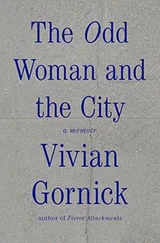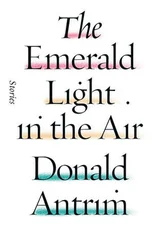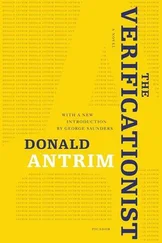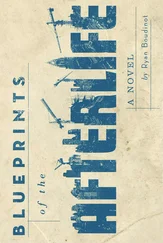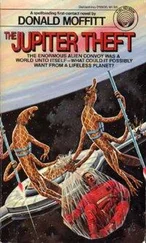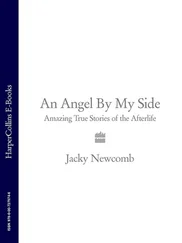In this cramped and vaguely unsafe environment, my chains-moking, coughing mother began to realize a fashion aesthetic that was, I believe, arguably original and defiantly antisocial.
The garment I often see, whenever I talk to my dead mother, is a silk kimono. Or it is not a kimono, exactly; it is a robe, hemmed short, that appears kimono-like. The body is white. The sleeves, too, are white, and are encircled with wide bands of machine-made ivory lace. There is a hint of Chanel in the thinner white bands that occur near the seams linking the sleeves to the body, and in the bunched-up lengths of silk crepe, one in aquamarine, another in a darker blue, and a third in indigo, which are wrapped, in a slightly militaristic style, around each shoulder, and held in place by narrow ribbons sewn like belt loops. These blue and indigo sashes descend from the loops, cascading down the sides of the kimono beneath the arms, and are weighted with horsehair tassels, twelve in all, shaped like angels.
Suspended over each breast of the kimono, from threads attached to detachable shining stars, are two metallic birds like Christmas-tree ornaments. One tethered bird is yellow and in flight; its opposite is pink and at rest. Directly beneath these swinging birds is a green field of fabric in the shape of a valentine heart, half appearing on the kimono’s right side, half on the left. If the garment’s overall ground is the kimono’s white silk, then the ground atop that ground is the divided green heart, which can be made whole by closing the kimono at the front. The heart, which stands about ten inches in height, serves as the locus for a gathering of ostensibly reassuring visual elements. On one side, where, if this were a medical illustration, an atrial chamber might appear, a fuzzy white cat — a cat like the dandruffy white cat my mother then had — sits stitched in place. A giraffe peeks from behind the top of the other side, as if looking curiously over a green hill. The scene is pastoral, a nursery picture. In keeping with the theme of childhood innocence, more green fabric extends down and around the garment’s sides in the form of two winding, ever-narrowing pathways bordered with elaborately stitched flowers. I am unable to look at these flowers without remembering the poppy fields in The Wizard of Oz .
There is more. Ribbons attached in the neighborhood of the green heart hang down below the robe’s bottom hem. At the ends of the ribbons are several found and custom-made objects: a piece of quartz, an empty pillbox, a charm made of metal and beads, a peacock feather, and a small pouch — a coin purse — knitted from brightly colored yarn. There are two lace sachets — of the frilly sort found in farmhouse bedroom dressers — filled with potpourri. Another ornament, made of felt and shaped like a banana, is, in fact, a yellow man in the moon, featuring a pointy nose, a broad mouth, and sleepy eyes.
In order to see the real action taking place on this garment, however, one must carefully turn it over, lay it flat, and study the back.
At the bottom, there is a section of dark-blue and white overshot — a traditional handwoven fabric used mainly for bedcovers — cut more or less in the shape of a pedestal. Flanking the pedestal are four decorative patches, two on each side, made from floral embroidered silks in black, gold, pink, bronze, silver, white, and blue. The patches are stitched on at angles. Are they meant to look like pockets? Are they badges? There’s something purposefully crazy about their off-kilter placement, as if they were intended to communicate the designer’s sense of spontaneity and play, her awareness of the life to be found in all things, even remnants of cloth. Directly above the dancing patches runs the continuation of the band of green fabric that began on the garment’s front as the flowered pathways branching off from the perimeter of the heart. On the robe’s back, this green strip is no longer bordered with flowers; it is hung with bronze and silver pendants — coins, seashells, and starfish. A lion and a horse, made from painted bamboo, descend from strings attached to the kimono’s mid-regions; they function together as toy sentinels guarding a complicated piece of Chinese fabric that looks, from a distance, a little like the head depicted in Edvard Munch’s The Scream . Instead of Munch’s wailing face, however, there can be found, at the center of this fabric, a waterbird — a golden crane with a black beak, dark eyes, and a red crest. Around this crane my mother has sewn a standard — a green organza horseshoe, held in place by loops of silver ribbon. The tail ends of the standard are tasseled — not with ornamental angels but with delicate white tassels, the kind appropriate, I would think, for a fringe on a lamp shade.
One more feature needs description. This is an object that covers — as if it had flown in from mountainous lands where giant, benign creatures dwell; found itself over southern Florida; gazed down and seen, from high above the clouds, my mother at work in her shop; then descended and landed in her fields of silk, where it got comfortable and decided to stay — this object, as I was saying, covers the entire upper back of the kimono. It is an enormous, enormously winged, butterfly.
The body of the butterfly is something my mother bought in a store. Its skin is paper, stretched over a lightweight wooden frame, and brightly painted. I suspect it may be an Indonesian export. It is three-dimensional and elongated — with a proper head, an abdomen, and a waspish tail — and is attached to the garment along the back seam, running head to tail down the wearer’s spine. Its outstretched wings, which are made of soft, quilted silk, reach to the kimono’s shoulders and are a dull white, painted with pastel swirls and stripes. With its outstretched wings — and as if in imitation of nature’s strategy of imitation — the creature looks like a kite. The wings reach to the kimono’s shoulders. As a crowning touch, the butterfly displays two delicate antennae that extend upward from its head. In photographs of the robe, these antennae are long and spiraling. Somewhere along the way, however, the antennae have been broken. They’re short, splintered.
For more than ten years, my mother had run a program in fashion, textiles, and costume history at Miami — Dade Community College. She had a small faculty under her, and many students. Frequently, she was up and out of the house by sunrise. She might not return before evening. She slept little. Instead, she drank. My father was her partner in this. As evening turned to night, the two of them fought. As the night got late, she went after him with greater and greater fury. A woman had come between my parents in the early years of their marriage, and brought about their first divorce. After their remarriage, when I was nine and my sister, Terry, eight — and until their relationship ended for good — the memory of that woman haunted our family. Many times, following a bout of fighting, when my mother had tumbled into bed or lost consciousness in a chair, my father wept and apologized.
“I’m sorry,” he would say to me and my sister, and the look on his face showed that he meant it. But though he did not intend to, and could not have known it, he was apologizing our mother out of existence. He was apologizing himself and his children out of existence, when he whispered to Terry and me, “Your mother works hard all day at school. She works so hard. She’s just tired. She’s tired.”
“She’s not tired!” I shouted back. “She’s an alcoholic!” No one was listening. Who pays attention to an unhappy fifteen-year-old? And, after all, my mother wasn’t the only one who was tired. All our lives were given over to her. I once marveled that my father could endure my mother. I found his martyrdom, as I thought of it then, honorable. It seemed to me that our family was guided by a bleak, incomprehensible fate. It wasn’t incomprehensible, though, and it wasn’t fate that was guiding us. It was alcohol.
Читать дальше


